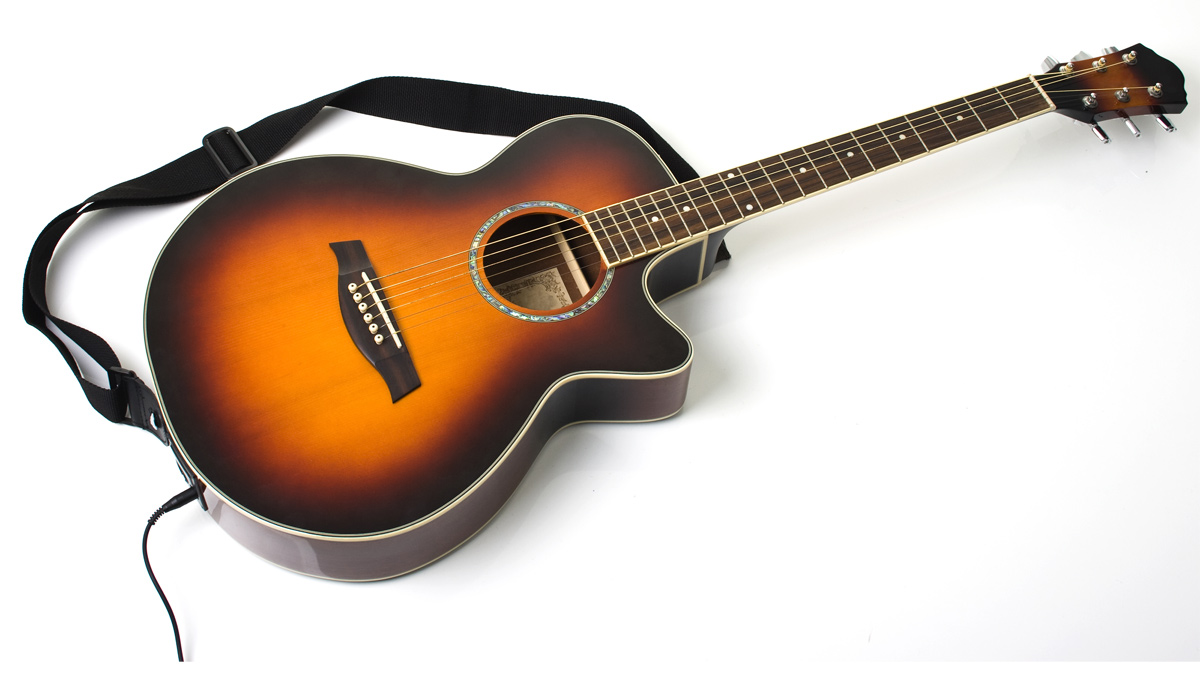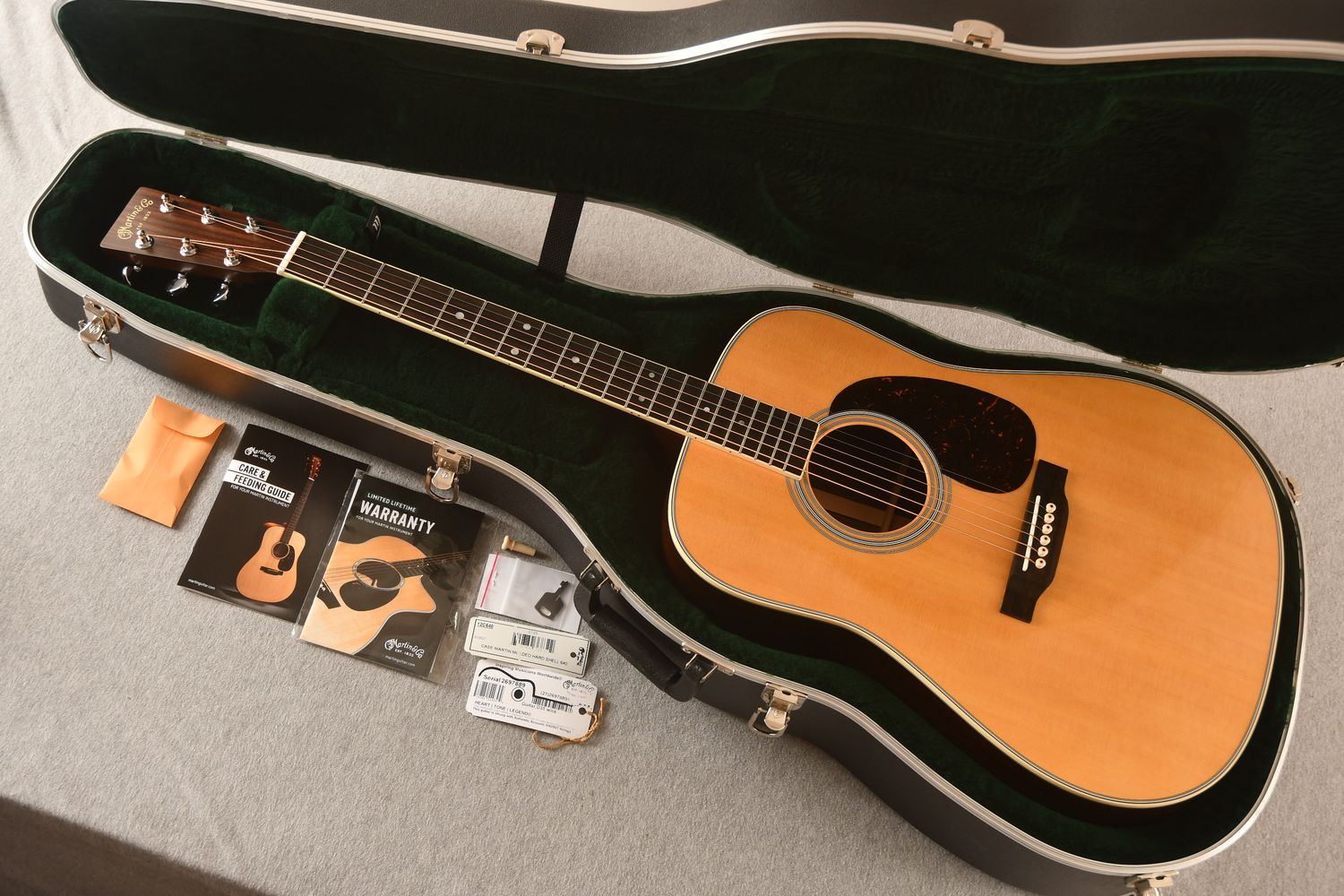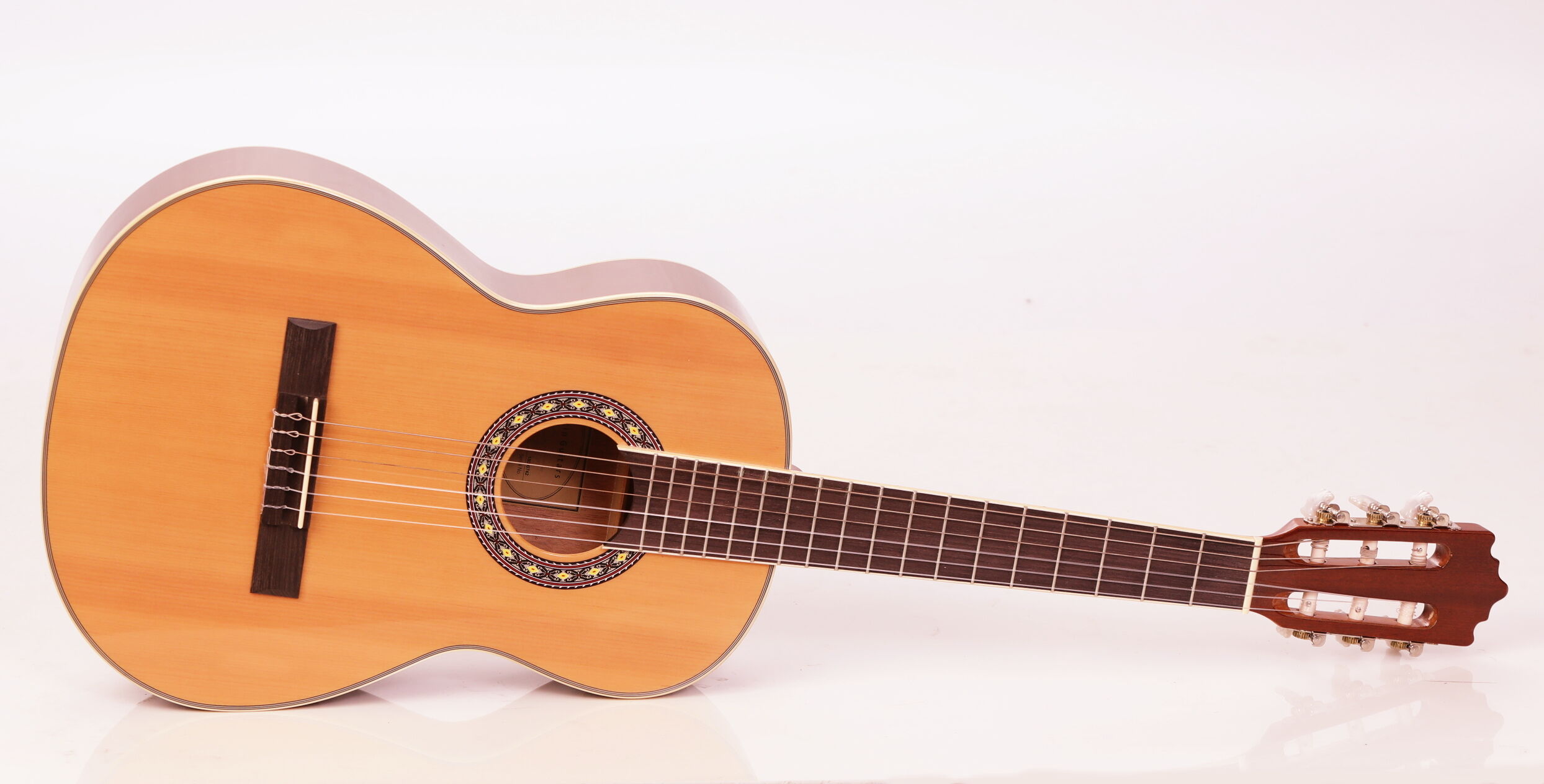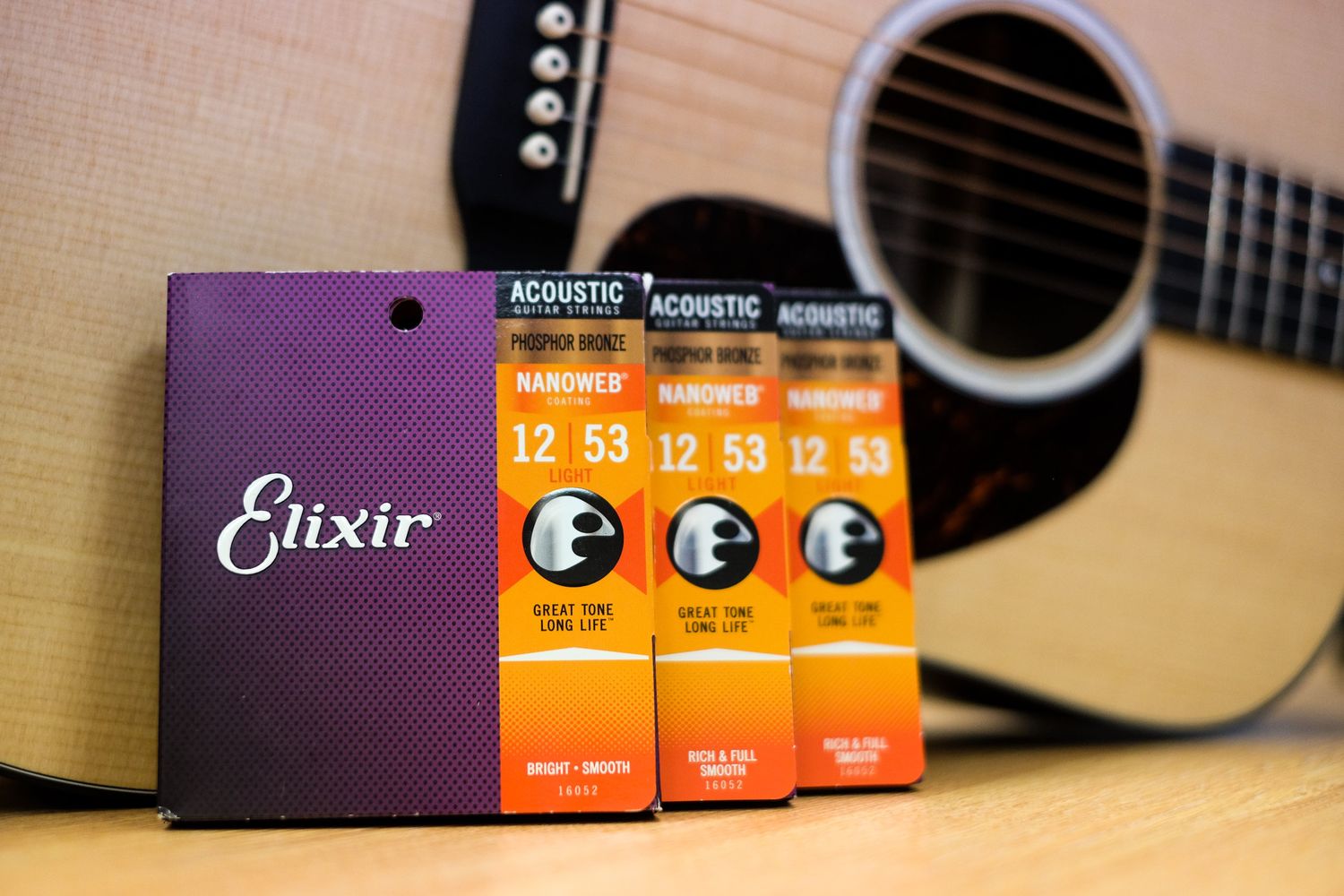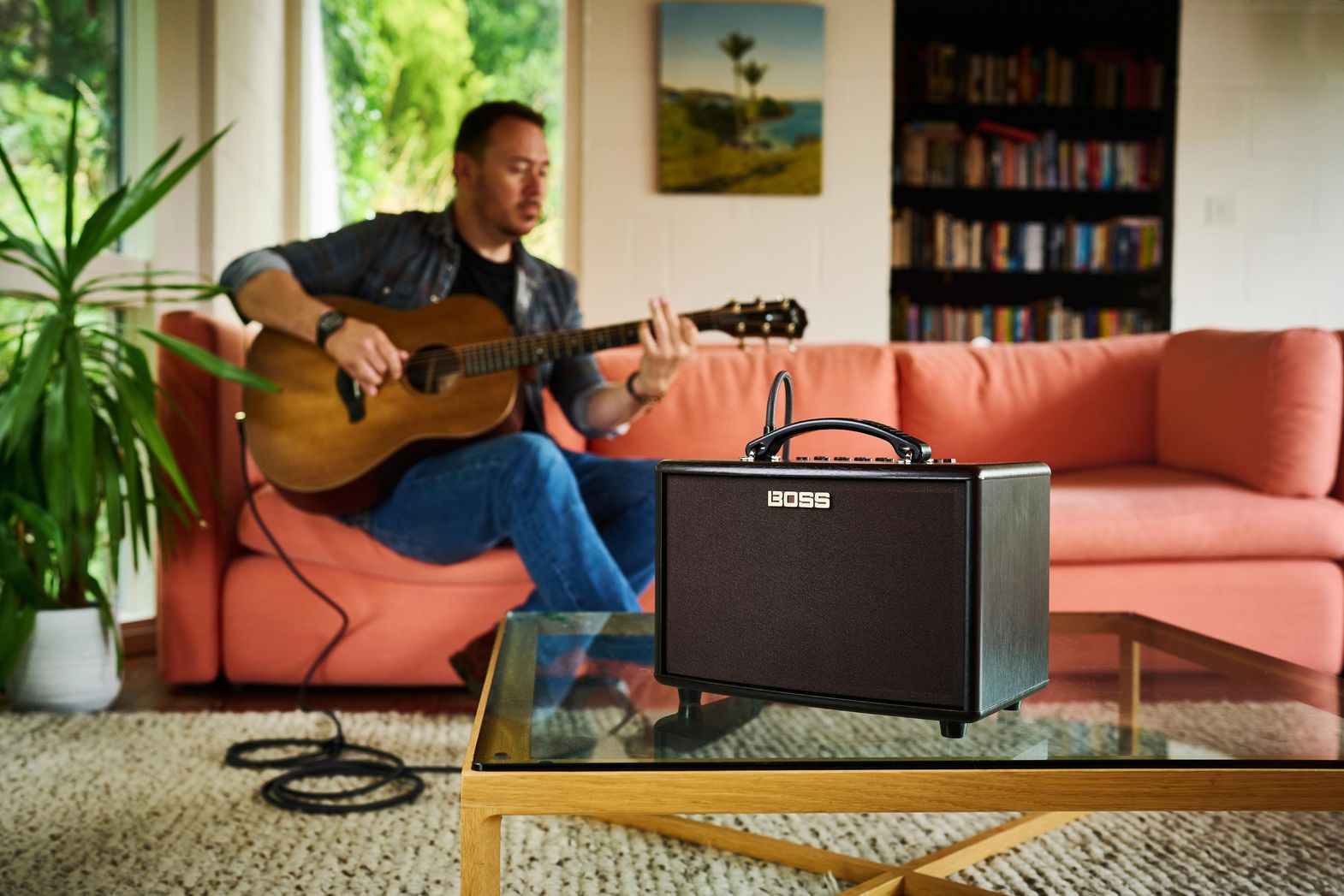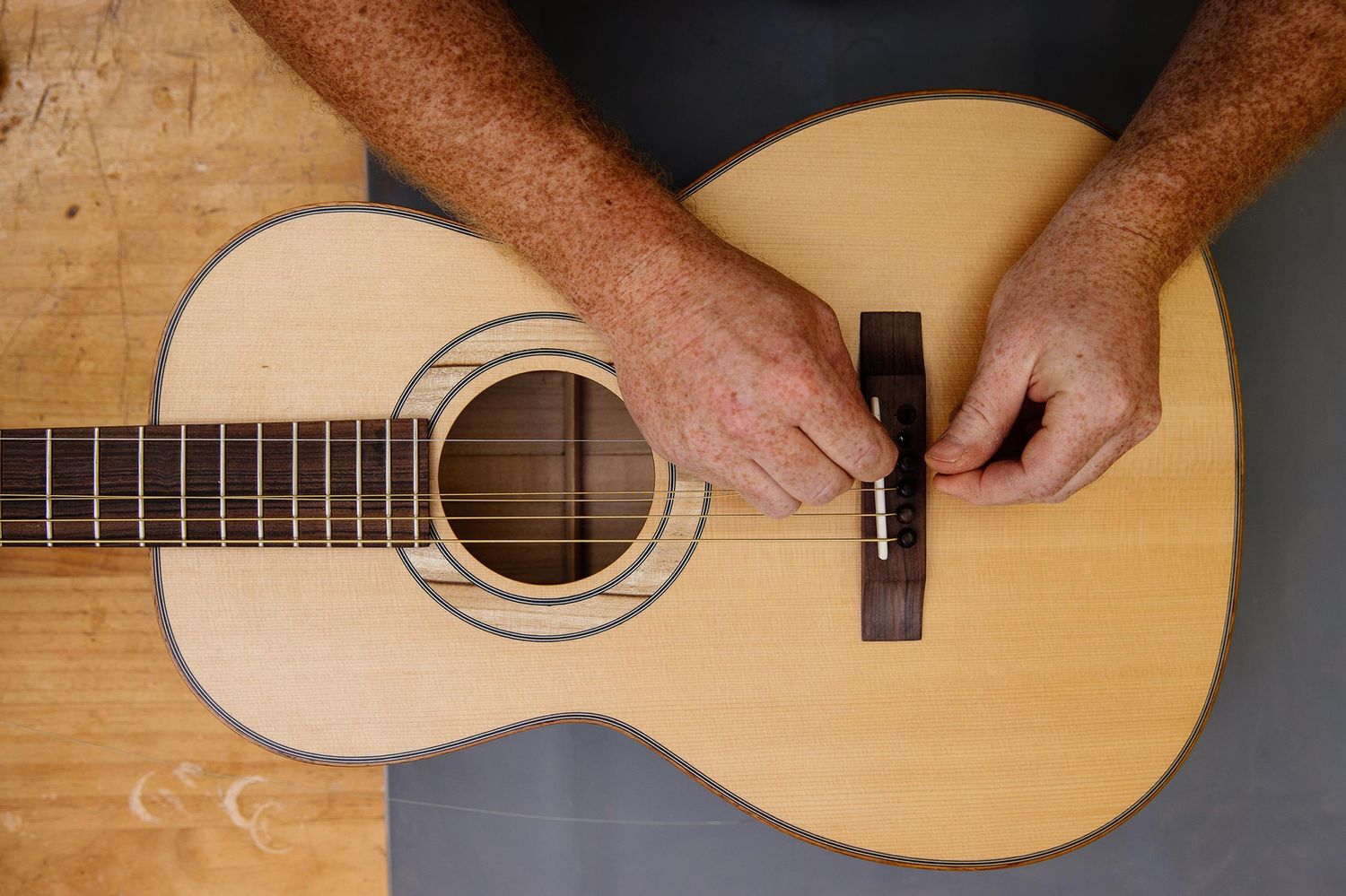Home>Production & Technology>Acoustic>What Is A Pickup On An Acoustic Guitar


Acoustic
What Is A Pickup On An Acoustic Guitar
Modified: March 12, 2024
Learn all about acoustic guitar pickups, including their types, installation, and how they impact the sound of your instrument. Discover the best pickups for your acoustic guitar.
(Many of the links in this article redirect to a specific reviewed product. Your purchase of these products through affiliate links helps to generate commission for AudioLover.com, at no extra cost. Learn more)
Table of Contents
Introduction
Acoustic guitars are beloved for their warm, natural sound and their ability to fill a room with rich, resonant tones. However, in certain performance settings, such as large venues or recording studios, the acoustic sound of a guitar may not carry as effectively as desired. This is where pickups come into play. A pickup is a device that captures the sound of an acoustic guitar and converts it into an electrical signal, allowing the guitar's natural sound to be amplified and projected to a larger audience.
The use of pickups on acoustic guitars has become increasingly popular, as it enables musicians to maintain the unique tonal qualities of their instruments while achieving greater volume and projection. Whether playing in a band, performing solo, or recording in a studio, having a pickup installed on an acoustic guitar provides versatility and amplification options that enhance the overall musical experience.
In this article, we will delve into the world of pickups for acoustic guitars, exploring the different types available, how they work, and the advantages and disadvantages of using them. By gaining a deeper understanding of pickups, guitar enthusiasts and musicians alike can make informed decisions about incorporating this technology into their musical endeavors.
Definition of a Pickup
A pickup, in the context of acoustic guitars, is a transducer that captures the vibrations of the guitar's strings and converts them into electrical signals. This process allows the natural sound of the acoustic guitar to be amplified through an external audio system. Essentially, a pickup serves as the bridge between the acoustic instrument and the amplification equipment, enabling the guitar's sound to be projected to a larger audience or recorded for various applications.
The pickup is typically installed either internally or externally on the acoustic guitar, depending on the specific design and preferences of the musician. Internal pickups are commonly mounted inside the guitar body, often beneath the saddle or within the soundhole, while external pickups may be attached to the guitar's body or soundboard. Regardless of the installation method, the primary function of the pickup remains consistent: to capture the acoustic guitar's sound and convert it into electrical signals that can be processed and amplified.
Pickups for acoustic guitars come in various shapes, sizes, and configurations, each with its own unique characteristics and sonic qualities. Some pickups are designed to faithfully reproduce the natural acoustic tone of the guitar, while others offer enhanced versatility and tonal shaping capabilities. Additionally, advancements in pickup technology have led to the development of innovative systems that combine multiple transducers and sensors to capture a more comprehensive range of acoustic frequencies and nuances.
In essence, a pickup serves as a crucial tool for acoustic guitarists seeking to amplify their instrument's sound without compromising its inherent tonal qualities. By harnessing the vibrations of the guitar strings and translating them into electrical signals, pickups enable musicians to share the captivating sound of their acoustic guitars with audiences and listeners in diverse performance and recording settings.
Types of Pickups for Acoustic Guitars
When it comes to amplifying the natural sound of an acoustic guitar, musicians have a variety of pickup options to choose from, each offering distinct characteristics and sonic capabilities. Understanding the different types of pickups available for acoustic guitars is essential for selecting the most suitable option based on individual playing styles, performance requirements, and tonal preferences.
-
Soundhole Pickups: These pickups are among the most common choices for acoustic guitars. They are typically mounted directly into the soundhole, capturing the vibrations of the strings and translating them into electrical signals. Soundhole pickups are known for their ease of installation and versatility, making them a popular option for musicians seeking a straightforward amplification solution without extensive modifications to their instruments.
-
Under-Saddle Pickups: Positioned beneath the saddle of the guitar, under-saddle pickups are designed to detect the subtle vibrations of the strings as they pass over the saddle. This type of pickup offers a discreet and unobtrusive installation, preserving the visual aesthetics of the guitar while providing a clear and balanced representation of the instrument's acoustic sound.
-
Soundboard Transducers: Soundboard transducers adhere to the surface of the guitar's soundboard, capturing the resonant vibrations and tonal nuances produced by the instrument's top wood. By directly sensing the acoustic energy of the soundboard, these pickups deliver a rich and natural representation of the guitar's tonal characteristics, making them a favored choice for musicians who prioritize authentic acoustic sound reproduction.
-
Internal Microphone Systems: Internal microphone systems utilize miniature microphones strategically placed within the guitar body to capture the acoustic sound from within the instrument. This approach offers a highly organic and true-to-life representation of the guitar's tonal qualities, providing a sense of depth and spatial realism that resonates with purist musicians and audiophiles.
-
Dual Source Systems: Dual source pickups combine multiple transducer elements, such as under-saddle pickups and internal microphones, to capture a comprehensive spectrum of the guitar's acoustic sound. By blending the characteristics of different pickup types, dual source systems offer enhanced tonal versatility and the ability to tailor the amplified sound to specific performance environments and musical genres.
-
Contact Pickups: Contact pickups, also known as piezo pickups, make direct contact with the guitar's body or bridge, effectively capturing the mechanical vibrations generated by the strings. This type of pickup excels in transmitting the fundamental frequencies and percussive elements of the guitar's sound, making it a popular choice for percussive playing styles and genres that demand articulate and dynamic sound reproduction.
Each type of pickup for acoustic guitars presents unique sonic attributes and installation considerations, catering to the diverse preferences and performance requirements of musicians. By exploring the characteristics of different pickup options, guitarists can make informed decisions when selecting the ideal amplification solution to complement their playing style and musical expression.
How Pickups Work
Pickups for acoustic guitars operate on the principle of transduction, where they convert the mechanical vibrations of the guitar strings into electrical signals that can be amplified and projected through speakers or recording equipment. Understanding the inner workings of pickups provides valuable insight into how they capture the nuanced sound of an acoustic guitar and reproduce it with fidelity and clarity.
At the core of most acoustic guitar pickups is the piezoelectric effect, which is harnessed to detect and translate string vibrations into electrical impulses. Piezoelectric materials, such as crystals or ceramics, possess the unique ability to generate an electric charge in response to mechanical stress. In the context of pickups, these materials are strategically positioned to intercept the vibrations of the guitar strings, causing them to deform and produce minute electrical signals proportional to the string movement.
When the strings of an acoustic guitar are plucked or strummed, they set off a chain reaction of vibrations that resonate through the instrument's body and bridge. The pickup, whether it's located under the saddle, within the soundhole, or on the soundboard, captures these vibrations and converts them into electrical signals through the piezoelectric transducer. This process effectively translates the acoustic energy of the vibrating strings into a stream of electrical impulses that mirror the nuances and timbre of the guitar's sound.
Once the electrical signals are generated by the pickup, they are then routed through the guitar's internal circuitry or preamp, where they may undergo initial signal conditioning and amplification. From there, the signals are transmitted to an external amplifier, PA system, or recording interface, where they are further amplified and processed to reproduce the natural acoustic sound of the guitar on a larger scale.
In the case of internal microphone systems, miniature microphones strategically placed within the guitar body capture the acoustic sound from within the instrument, offering a distinct approach to reproducing the guitar's tonal qualities. These microphones excel in capturing the spatial characteristics and resonances of the guitar's sound, providing a sense of depth and realism that resonates with purist musicians and audiophiles.
Overall, the intricate process by which pickups work demonstrates the fusion of acoustic artistry and technological innovation, allowing the captivating sound of acoustic guitars to be faithfully captured, transformed, and projected with remarkable clarity and authenticity. By harnessing the piezoelectric effect and advanced transducer technologies, pickups empower musicians to share the evocative beauty of their acoustic instruments with audiences and listeners across diverse musical landscapes.
Pros and Cons of Using a Pickup on an Acoustic Guitar
When considering the incorporation of a pickup into an acoustic guitar setup, it is essential to weigh the advantages and potential drawbacks associated with this amplification technology. By evaluating the pros and cons of using a pickup on an acoustic guitar, musicians can make informed decisions that align with their performance needs, tonal preferences, and artistic expression.
Pros
-
Versatility: One of the primary benefits of using a pickup on an acoustic guitar is the enhanced versatility it provides. With a pickup installed, musicians can seamlessly transition from intimate solo performances to larger venues or ensemble settings, where amplified sound projection is essential. This versatility empowers guitarists to adapt to diverse performance environments without compromising the inherent tonal qualities of their instruments.
-
Amplification: By utilizing a pickup, acoustic guitarists can achieve greater volume and projection, ensuring that their music reaches a broader audience. Whether performing in a live concert setting or recording in a studio, the ability to amplify the natural sound of the guitar enhances the overall sonic impact and ensures that the nuances of the performance are faithfully conveyed.
-
Feedback Control: Certain types of pickups, such as under-saddle transducers and soundhole pickups, offer effective feedback control, minimizing the risk of unwanted audio feedback during amplified performances. This feature is particularly valuable in high-volume settings, where controlling feedback is crucial for maintaining sound clarity and stability.
-
Recording Capabilities: With a pickup-equipped acoustic guitar, musicians can easily connect to recording equipment, allowing for seamless integration into studio recording sessions. The ability to capture the authentic acoustic sound directly from the guitar facilitates high-quality recordings, making pickups a valuable tool for acoustic musicians in the studio environment.
-
Tonal Shaping: Some pickup systems offer onboard preamps and equalization controls, enabling musicians to shape and tailor their amplified sound to suit specific musical genres and performance requirements. This capability empowers guitarists to fine-tune their tone, adding a layer of customization to their acoustic performances.
Cons
-
Tonal Alteration: While pickups facilitate amplified sound projection, some musicians may find that the natural acoustic tone of their guitars is subtly altered when using certain pickup systems. This alteration can be attributed to the inherent differences between acoustic sound projection and amplified sound reproduction, leading to a nuanced shift in tonal characteristics.
-
Installation Impact: The installation of a pickup, particularly internal systems, may require modifications to the guitar, potentially impacting its visual aesthetics and structural integrity. This consideration is important for musicians who value the original appearance and construction of their instruments.
-
Dependency on Amplification: Acoustic guitarists using pickups must rely on amplification equipment to project their sound effectively. This dependency introduces logistical considerations, such as the availability of amplification resources and the need for consistent maintenance of the pickup system and associated audio gear.
-
Cost and Maintenance: The initial investment and ongoing maintenance of pickups and related amplification equipment represent a financial consideration for musicians. Additionally, the need for occasional adjustments and upkeep of the pickup system adds to the overall cost of ownership.
-
Sound Authenticity: Some purist musicians may express concerns about the authenticity of amplified acoustic sound, as pickups introduce a layer of electronic processing and signal conversion that differs from the natural acoustic projection of the instrument.
In weighing the pros and cons of using a pickup on an acoustic guitar, musicians can make informed decisions that align with their artistic vision and performance requirements. By carefully considering the implications of incorporating amplification technology, guitarists can leverage the benefits of pickups while mitigating potential drawbacks, ultimately enhancing their musical expression and connectivity with audiences.
Conclusion
In conclusion, the utilization of pickups for acoustic guitars represents a pivotal convergence of traditional acoustic artistry and modern amplification technology. By capturing the nuanced vibrations of the guitar strings and transforming them into electrical signals, pickups enable musicians to amplify and project the captivating sound of their acoustic instruments with clarity and fidelity. The diverse array of pickup options, including soundhole pickups, under-saddle transducers, soundboard transducers, internal microphone systems, dual source systems, and contact pickups, offers musicians a spectrum of sonic possibilities to suit their individual playing styles and performance needs.
The decision to incorporate a pickup into an acoustic guitar setup involves a thoughtful consideration of the advantages and potential limitations associated with this amplification technology. While pickups provide enhanced versatility, amplification capabilities, feedback control, recording opportunities, and tonal shaping possibilities, they may also introduce subtle tonal alterations, installation impacts, dependency on amplification, cost considerations, and authenticity concerns. By weighing these factors, musicians can navigate the landscape of pickups with informed discernment, aligning their artistic vision with the practical implications of amplifying their acoustic sound.
Ultimately, the use of pickups on acoustic guitars empowers musicians to share their musical expression across diverse performance environments, from intimate acoustic settings to expansive concert stages and recording studios. The seamless integration of pickups into the acoustic guitar landscape reflects a harmonious blend of tradition and innovation, allowing the timeless allure of acoustic sound to resonate with audiences and listeners on a broader scale. Whether pursuing the organic warmth of a soundboard transducer, the dynamic articulation of a contact pickup, or the balanced clarity of an under-saddle transducer, musicians can harness the power of pickups to amplify the evocative beauty of their acoustic instruments while preserving their unique tonal character.
In essence, the world of pickups for acoustic guitars embodies a realm of sonic exploration and creative possibilities, where the rich heritage of acoustic craftsmanship converges with the transformative capabilities of modern technology. As musicians continue to navigate the evolving landscape of acoustic amplification, the enduring allure of acoustic guitars, enhanced by the nuanced artistry of pickups, will continue to captivate audiences and inspire musical journeys for generations to come.



